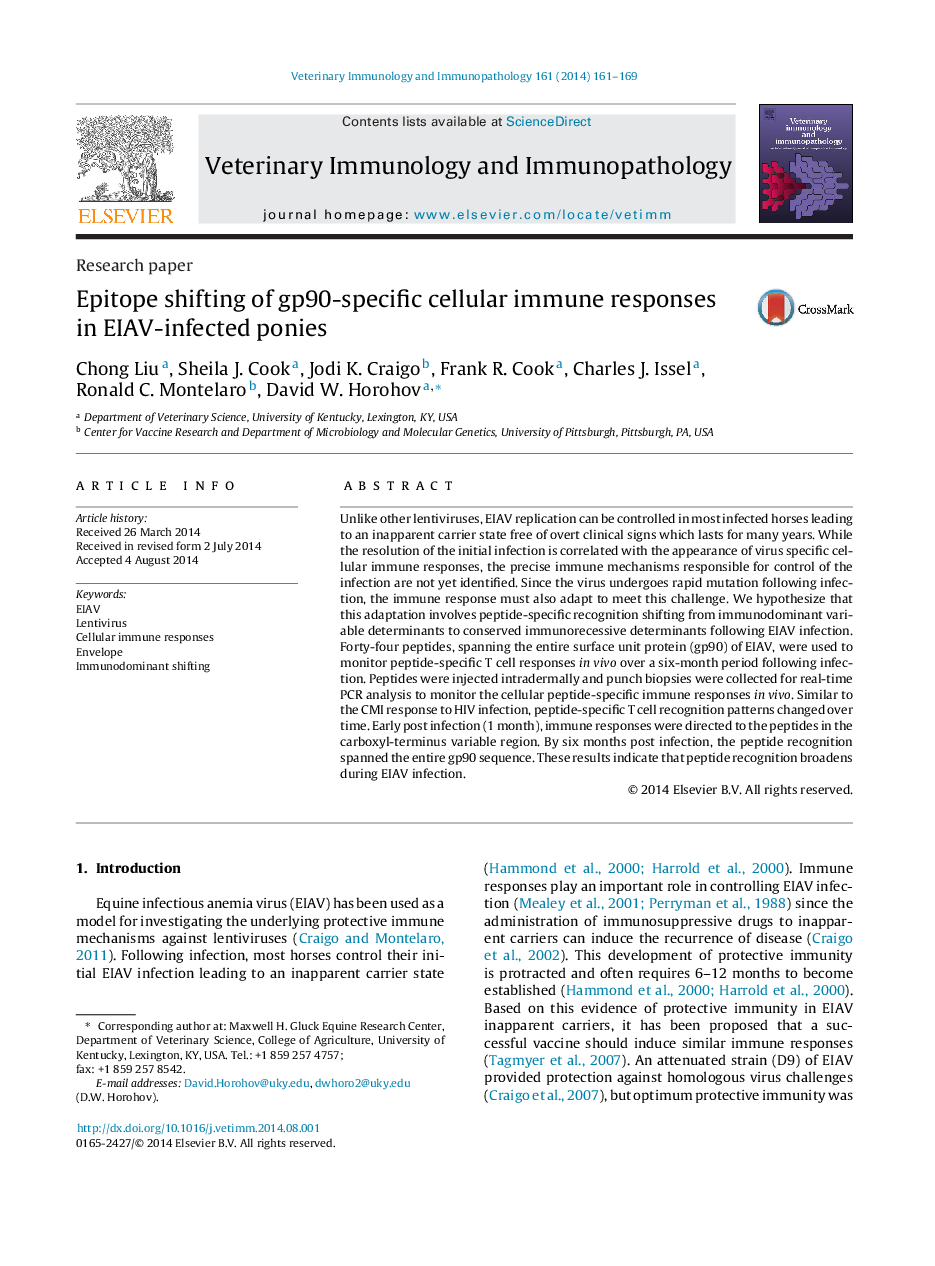| Article ID | Journal | Published Year | Pages | File Type |
|---|---|---|---|---|
| 2461503 | Veterinary Immunology and Immunopathology | 2014 | 9 Pages |
Unlike other lentiviruses, EIAV replication can be controlled in most infected horses leading to an inapparent carrier state free of overt clinical signs which lasts for many years. While the resolution of the initial infection is correlated with the appearance of virus specific cellular immune responses, the precise immune mechanisms responsible for control of the infection are not yet identified. Since the virus undergoes rapid mutation following infection, the immune response must also adapt to meet this challenge. We hypothesize that this adaptation involves peptide-specific recognition shifting from immunodominant variable determinants to conserved immunorecessive determinants following EIAV infection. Forty-four peptides, spanning the entire surface unit protein (gp90) of EIAV, were used to monitor peptide-specific T cell responses in vivo over a six-month period following infection. Peptides were injected intradermally and punch biopsies were collected for real-time PCR analysis to monitor the cellular peptide-specific immune responses in vivo. Similar to the CMI response to HIV infection, peptide-specific T cell recognition patterns changed over time. Early post infection (1 month), immune responses were directed to the peptides in the carboxyl-terminus variable region. By six months post infection, the peptide recognition spanned the entire gp90 sequence. These results indicate that peptide recognition broadens during EIAV infection.
